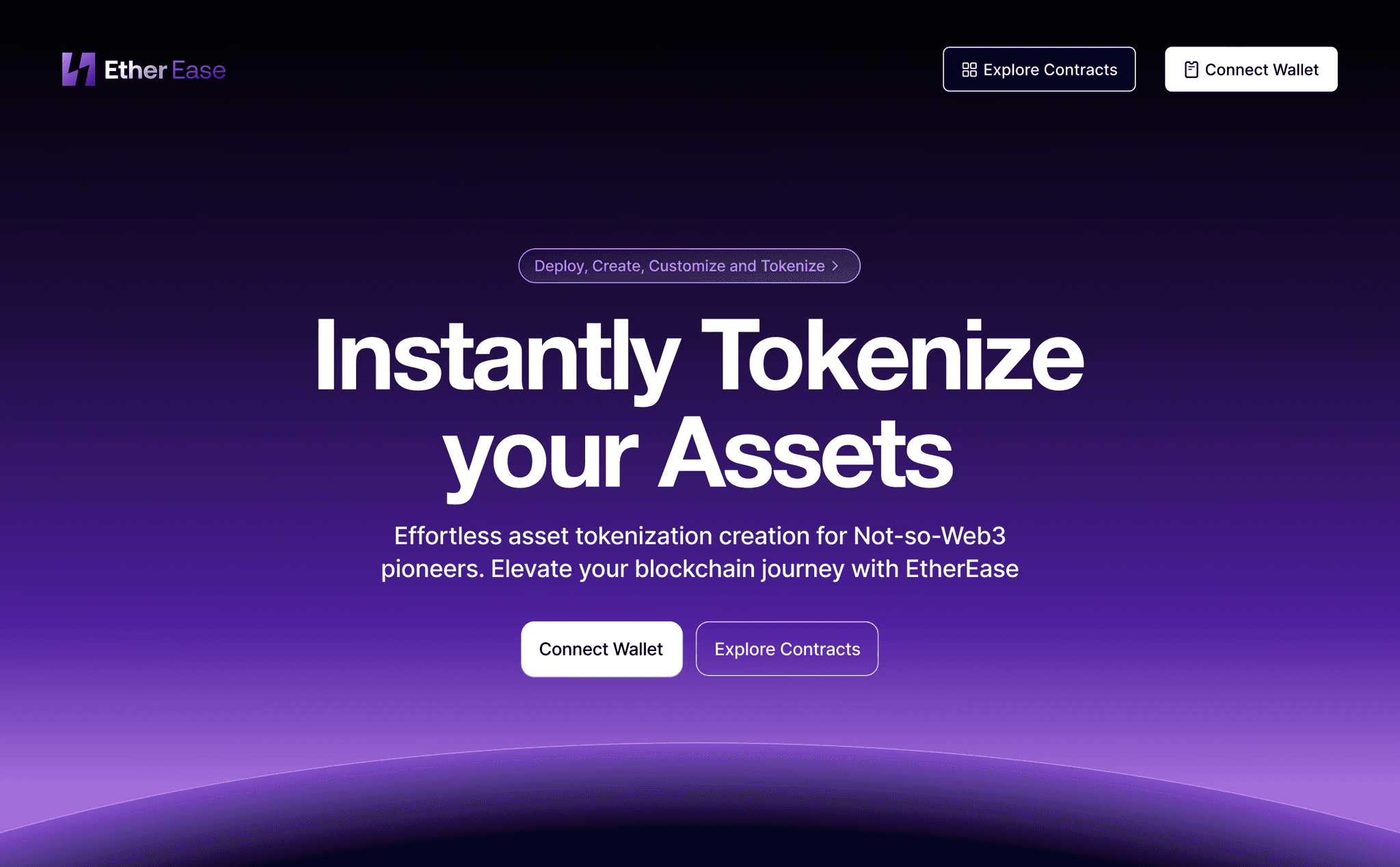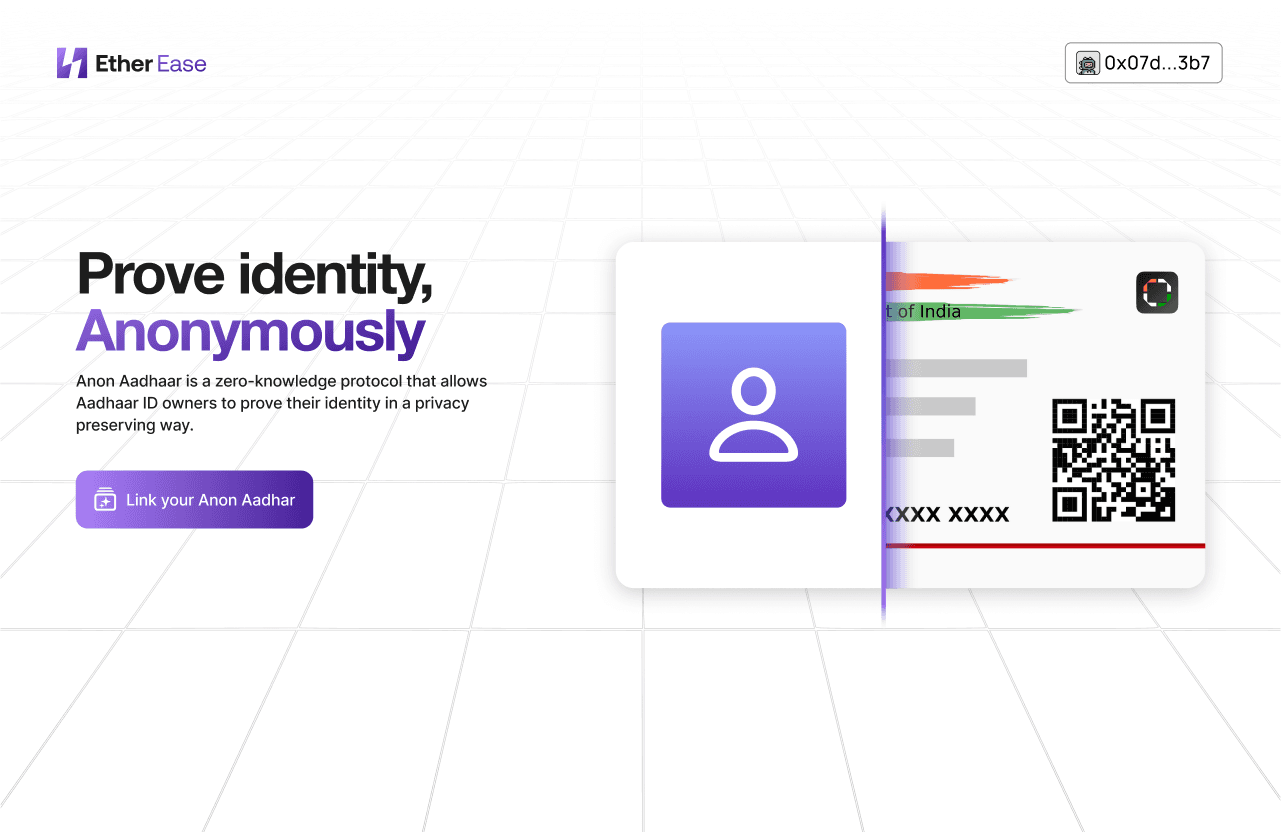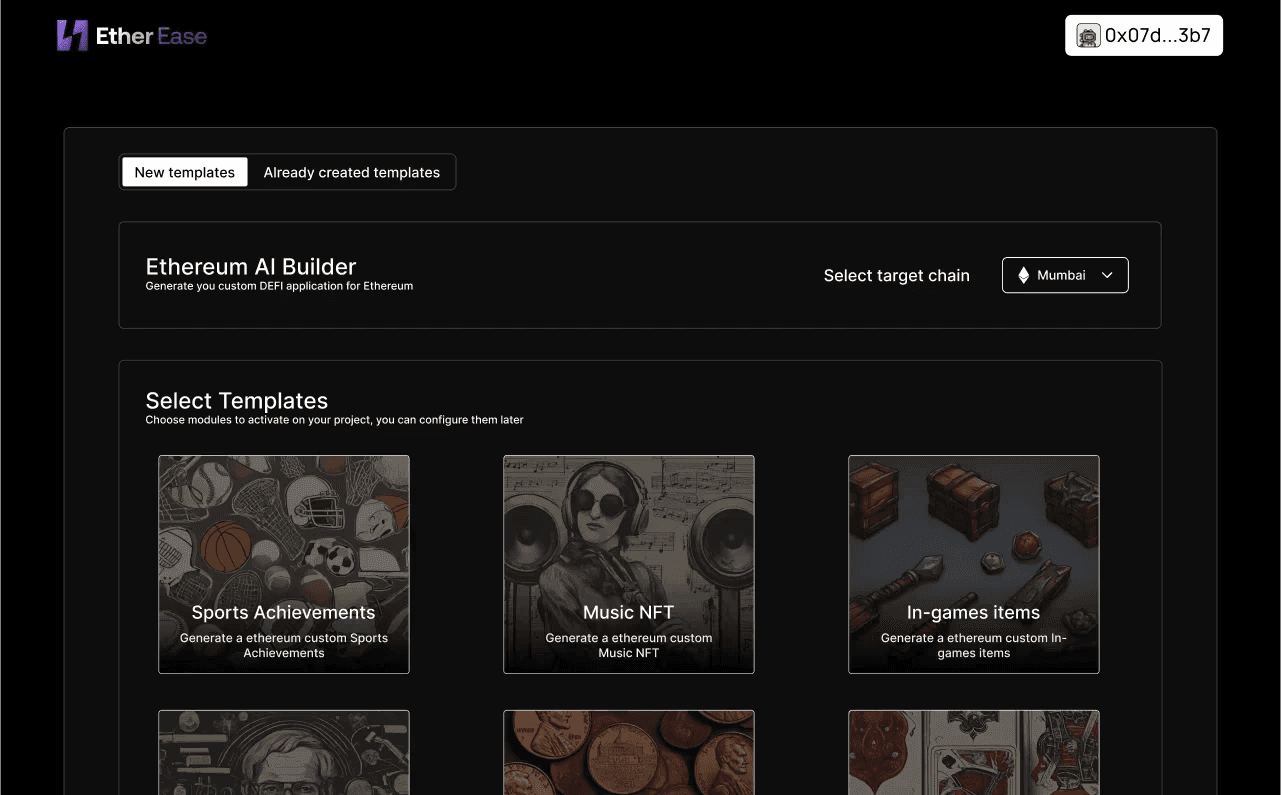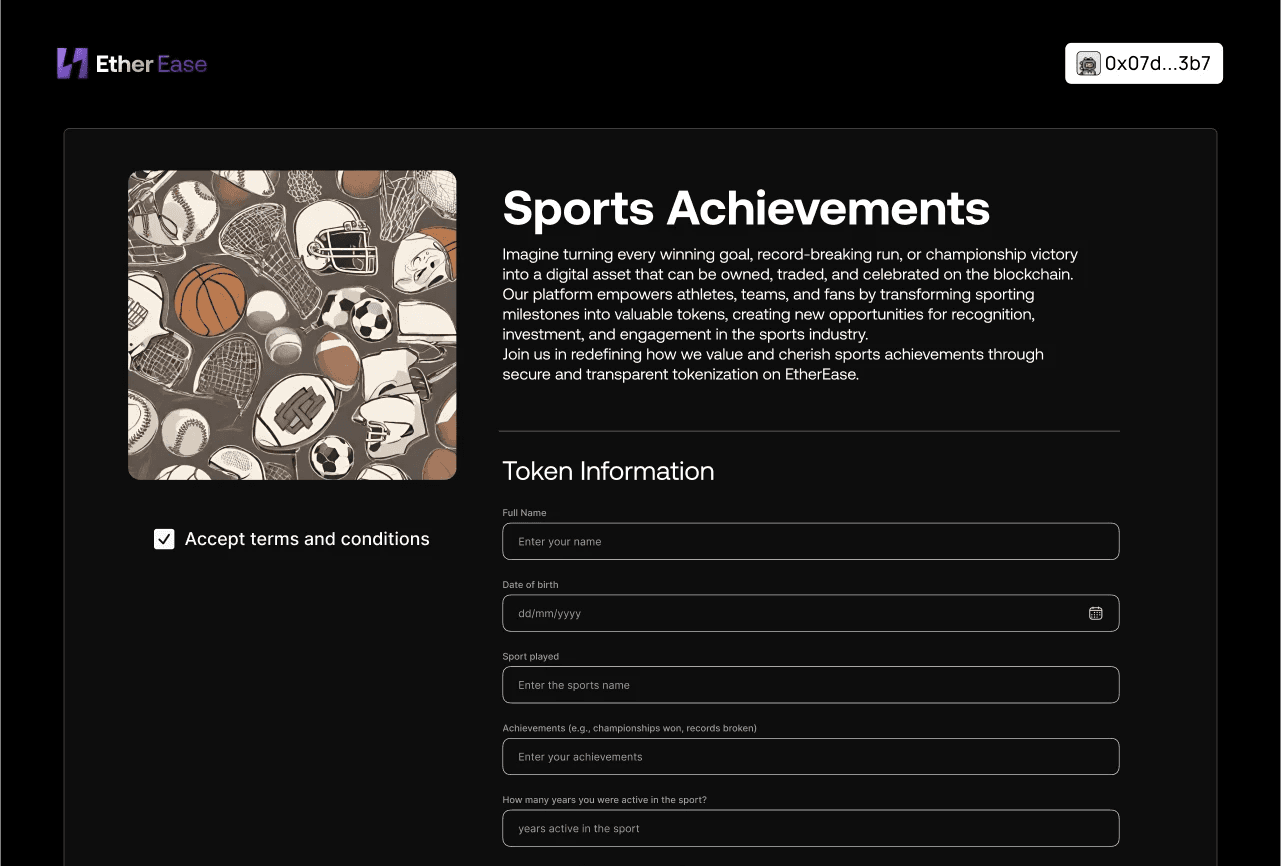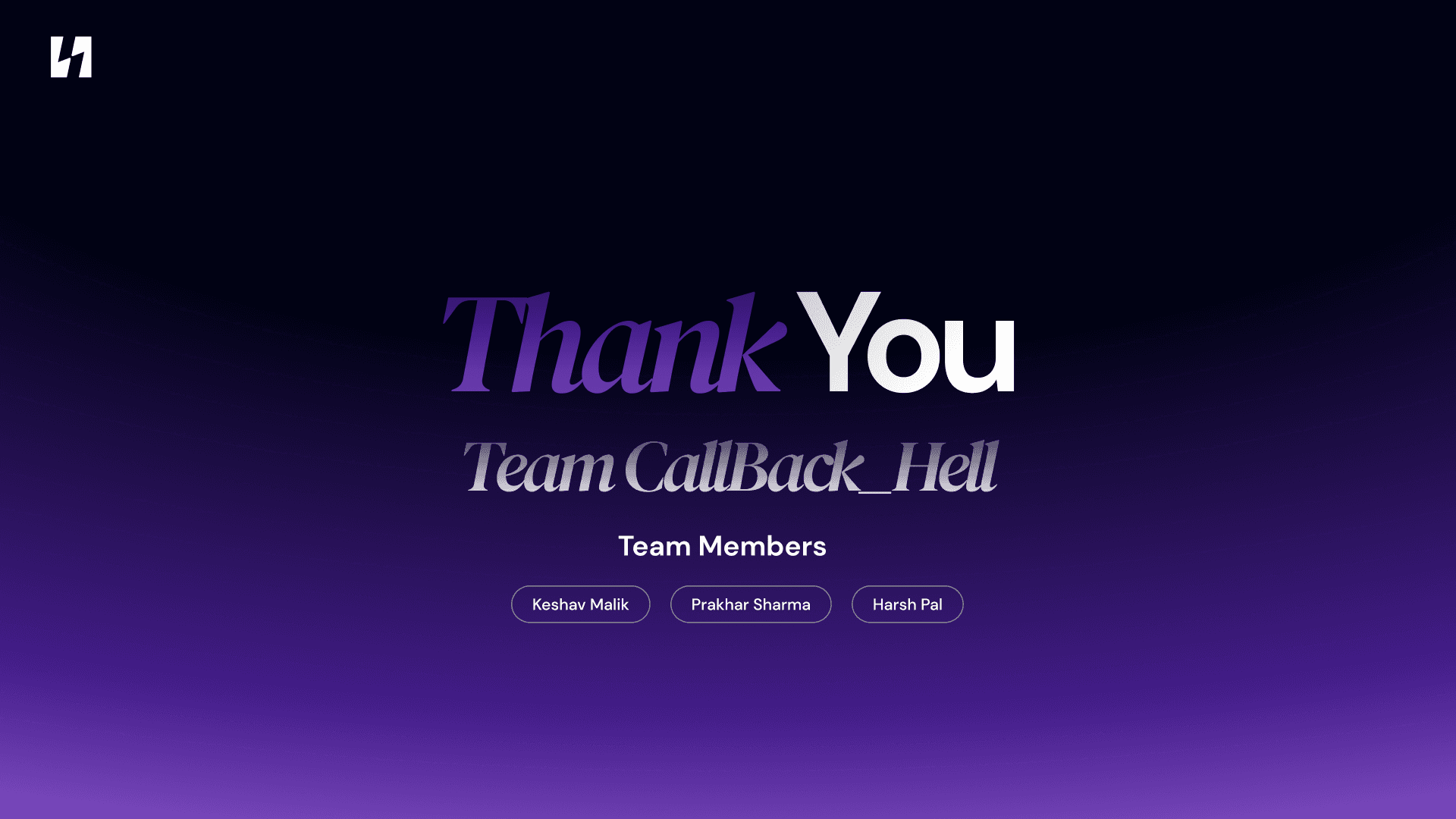Etherease - Instantly Tokenize Your Assets
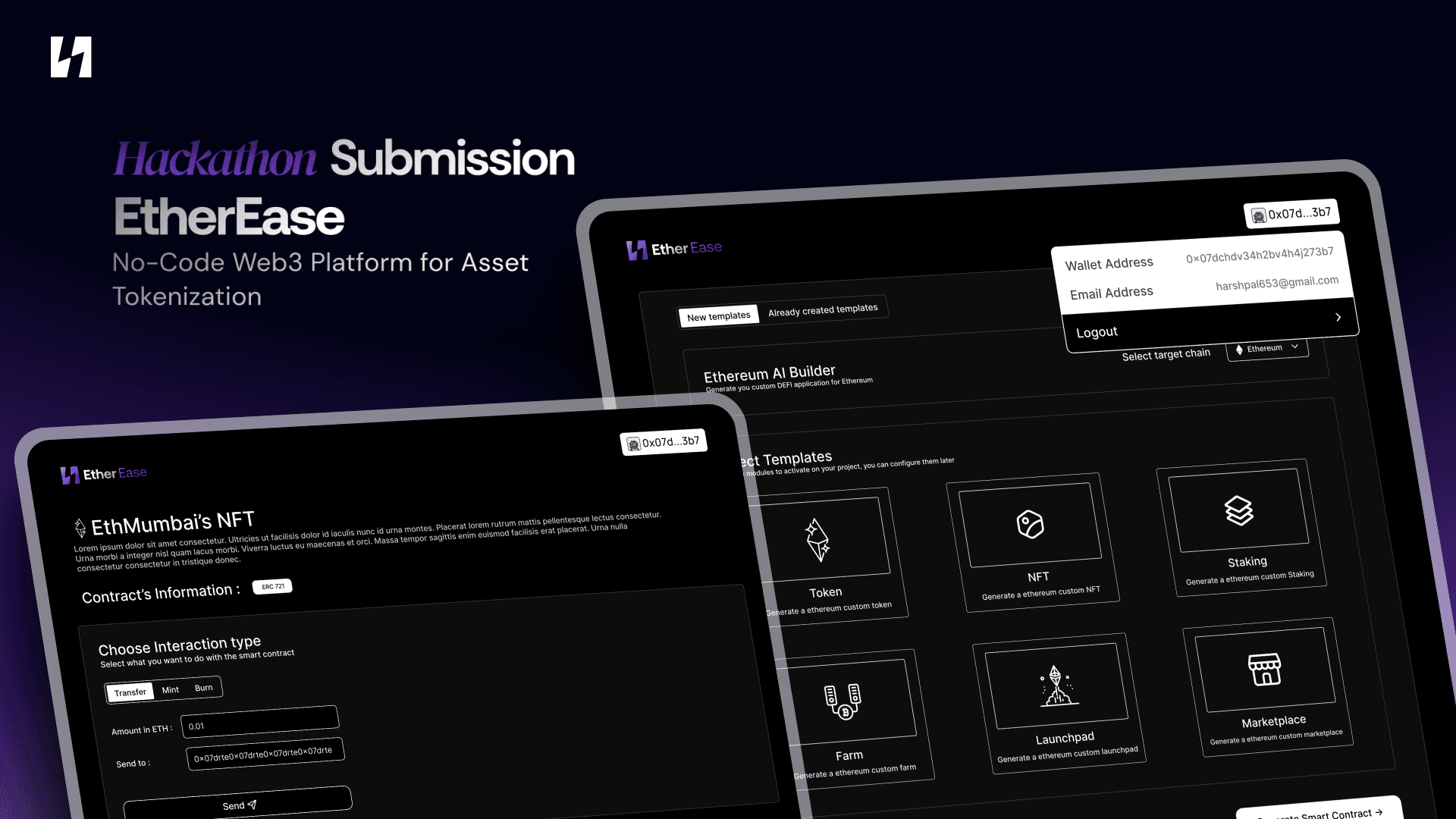
At the EthMumbai Hackathon, my team and I built a transformative project aimed at bridging the gap between non-technical users and the complex world of Web3.
Our team, "CallBack_Hell," developed Etherease - Instantly Tokenize Your Assets, a no-code web3 platform designed to make asset tokenization accessible to everyone. The project was born out of a desire to demystify Web3 technologies, offering a secure and user-friendly interface that empowers anyone to engage with blockchain without needing coding skills.
Our challenge?
The project challenge was to simplify Web3 adoption for non-technical users by developing a no-code platform that enables them to easily tokenize assets, create smart contracts, and interact with blockchain technology without requiring any coding skills or deep technical knowledge.
Problem statement:
In our research, we identified several key challenges that non-technical users face when attempting to engage with Web3:
Complex Technical Terminologies: The jargon associated with Web3 can be overwhelming, making it difficult for non-technical users to understand and engage with the technology.
Low Security: Freelance teams often lack the proper security measures, leading to potential vulnerabilities.
Long Development Timelines: Developing decentralized applications (dApps) can be time-consuming, especially for those new to the field.
Coding Experience Required: Many Web3 protocols require extensive coding knowledge, limiting accessibility for non-technical users.

What are the main objectives?
Simplify Web3 Adoption: Create a user-friendly platform that allows non-technical users to tokenize assets and create smart contracts effortlessly.
Enhance Security: Implement account abstraction using Ethereum’s ERC-4337 standard to provide an extra layer of security.
Reduce Complexity: Break down complex Web3 terminologies and processes into an intuitive, easy-to-understand interface.
Improve Accessibility: Ensure that the platform is accessible to artists, freelancers, and other non-technical users who want to engage with blockchain technology.
Streamline Development: Offer pre-audited, ready-to-deploy smart contract templates to significantly reduce the time required to launch decentralized applications (dApps).
Crafting the Experience:
Desk Research
To ensure our design decisions were grounded in reality, we conducted extensive desk research focusing on Web3 terminologies, user needs, and existing solutions in the blockchain space. This research helped us build a solid foundation for understanding the challenges and opportunities in making Web3 accessible to non-technical users.
Ideation
Our ideation process involved brainstorming sessions, discussions with team members, and consultations with Web3 experts, devrels, and degens on Twitter. We synthesized insights from these conversations into actionable ideas that would drive the project forward. The goal was to create a platform that was not only functional but also intuitive and user-friendly.
Defining Requirements
Based on our research and ideation, we finalized the key features and requirements for Etherease. This included user authentication, smart wallet generation, contract deployment, and token minting—all tailored to meet the needs of non-technical users.
Web3 Environment Design
Understanding the unique challenges of designing in a Web3 environment, we focused on creating a visual design that was both clean and formal. We selected fonts like Inter and Helvetica Neue to convey this vibe, ensuring that the platform was not only functional but also visually appealing.
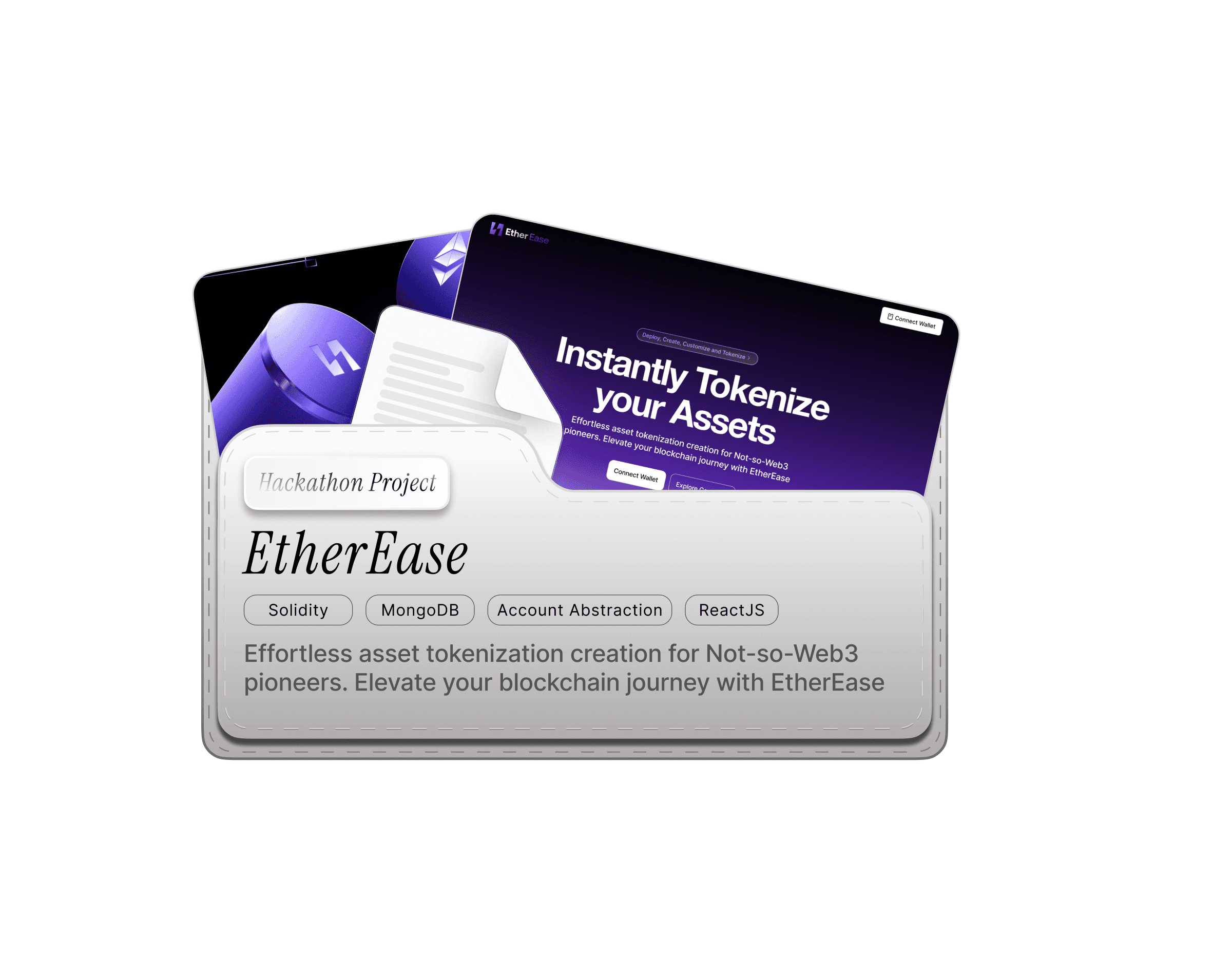
Who are the Users?
Non-Technical Individuals: People who want to engage with blockchain technology but lack coding skills, such as artists, freelancers, and creatives.
Freelancers: Individuals who wish to tokenize their work or assets and require an easy-to-use platform without needing extensive technical knowledge.
Small Businesses: Owners looking to leverage blockchain technology for asset tokenization and smart contracts without investing in technical development.
Web3 Enthusiasts: Beginners in the Web3 space who need a simplified way to explore and utilize blockchain technology.
Artists and Creatives: Those who want to create and sell NFTs or tokenize their creative assets with minimal technical barriers.
Solution:
Etherease addresses these problems by offering an intuitive platform that simplifies complex terminologies and processes. The platform provides an extra layer of security through account abstraction using Ethereum’s ERC-4337 standard and reduces development time with ready-to-deploy, audited smart contract templates.
Research
Understanding the complex terminologies in the Web3 ecosystem was crucial for this project. Below are some key concepts we focused on:
Account Abstraction & ERC-4337: These terms refer to the separation of user identities from their private keys, making blockchain transactions more user-friendly. ERC-4337 is a standard that allows smart contract-based wallets, enabling features like multi-signature security without needing to modify the underlying blockchain protocol.
NFTs (Non-Fungible Tokens): Unique digital assets that represent ownership of a specific item or piece of content on the blockchain. Unlike cryptocurrencies, each NFT is distinct and cannot be exchanged on a one-to-one basis.
Tokens: In the context of blockchain, tokens are digital assets that can represent various utilities, rights, or ownership on a platform. They can be fungible (like cryptocurrencies) or non-fungible (like NFTs).
Challenges:
Implementing account abstraction was the most significant challenge. It required:
Creating a secure abstraction layer between user accounts and blockchain infrastructure.
Ensuring compatibility with multiple blockchain protocols.
Implementing rigorous security measures to protect user data and assets.
Balancing performance and efficiency within the abstraction layer.
Through extensive research, testing, and collaborative problem-solving, we successfully integrated account abstraction, providing users with a seamless, secure experience.
Mentors Feedbacks:
Mentors provided crucial feedback throughout the hackathon. For example, they suggested incorporating a magic link for quick login, which enhanced user accessibility and simplified the onboarding process for non-Web3 users. Other feedback included refining the user flow to reduce friction and improve overall usability.
Wireframing & Sketching
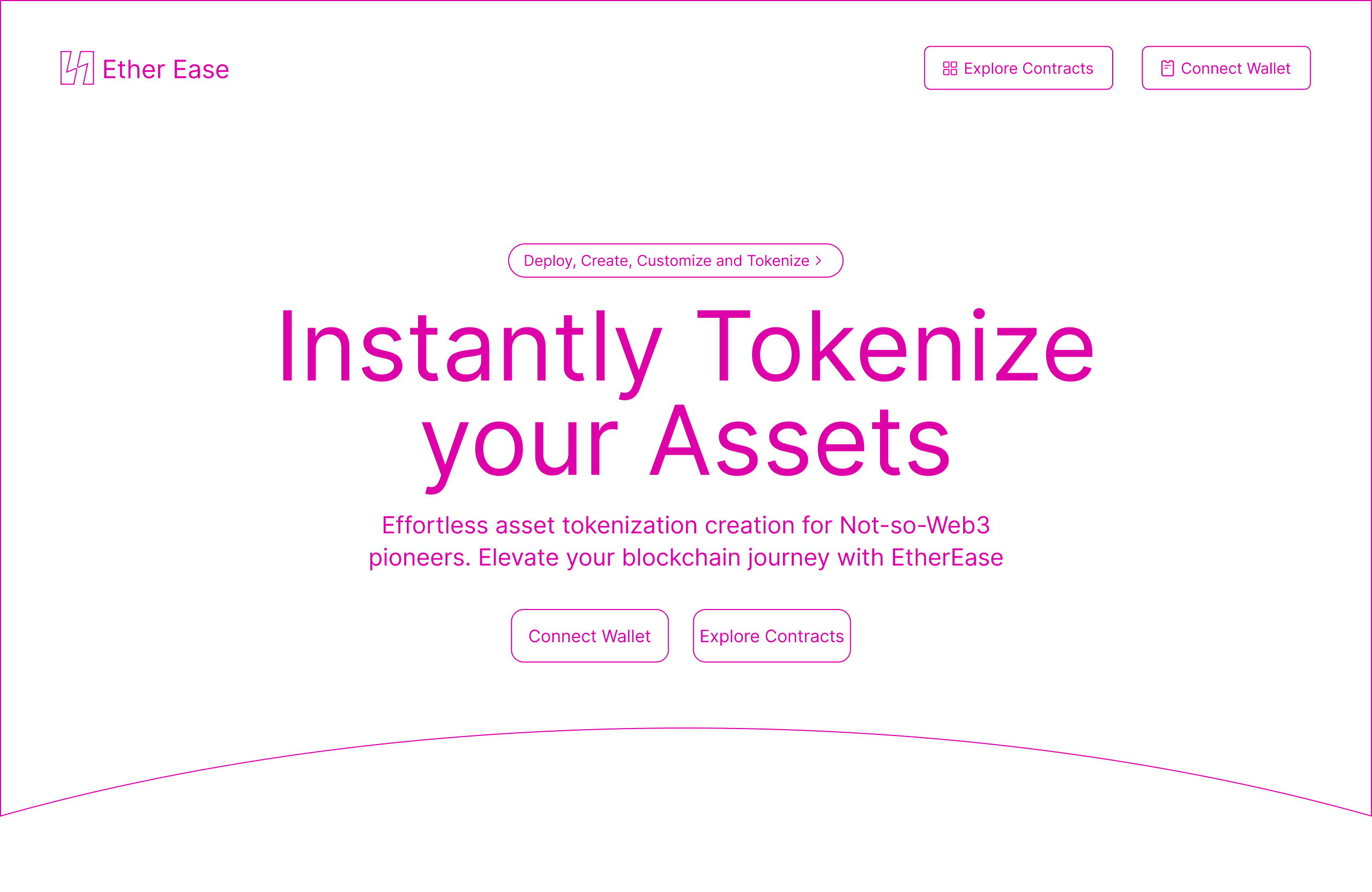
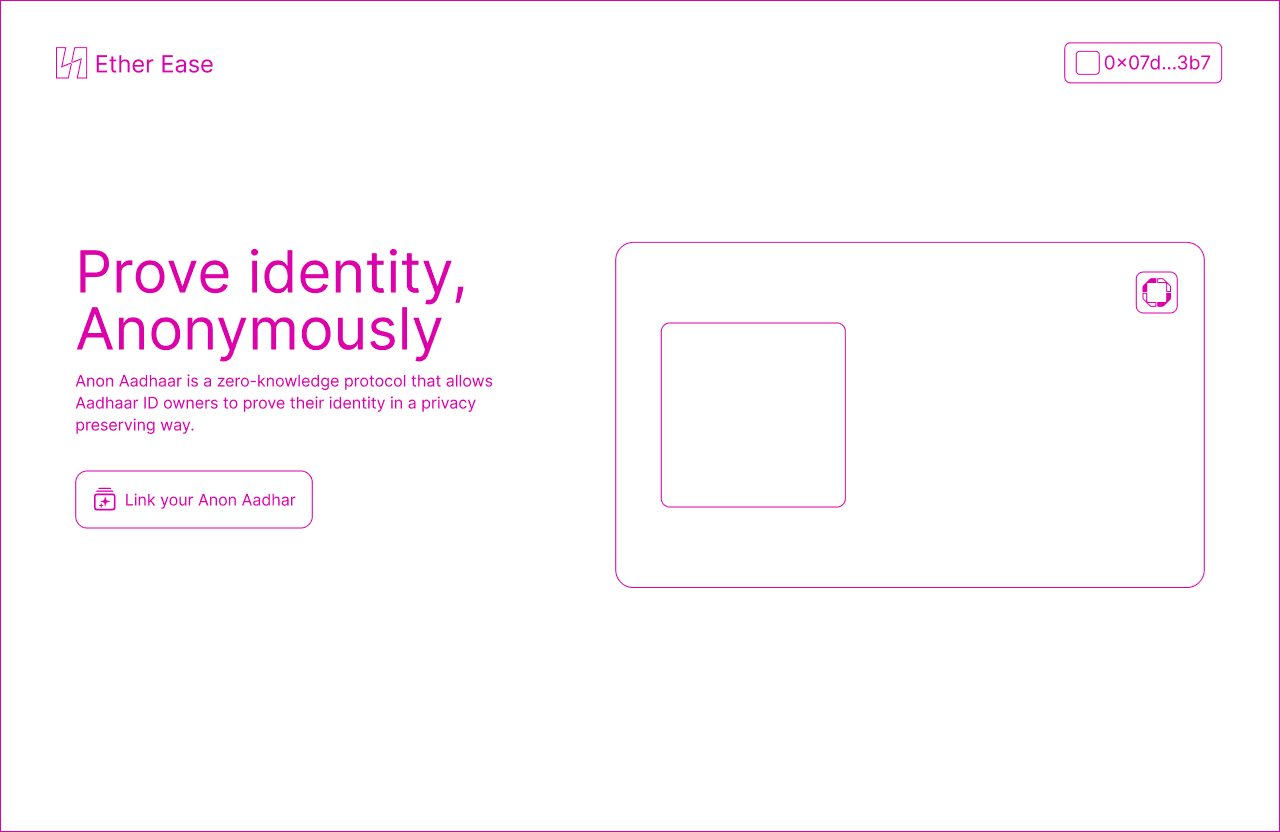
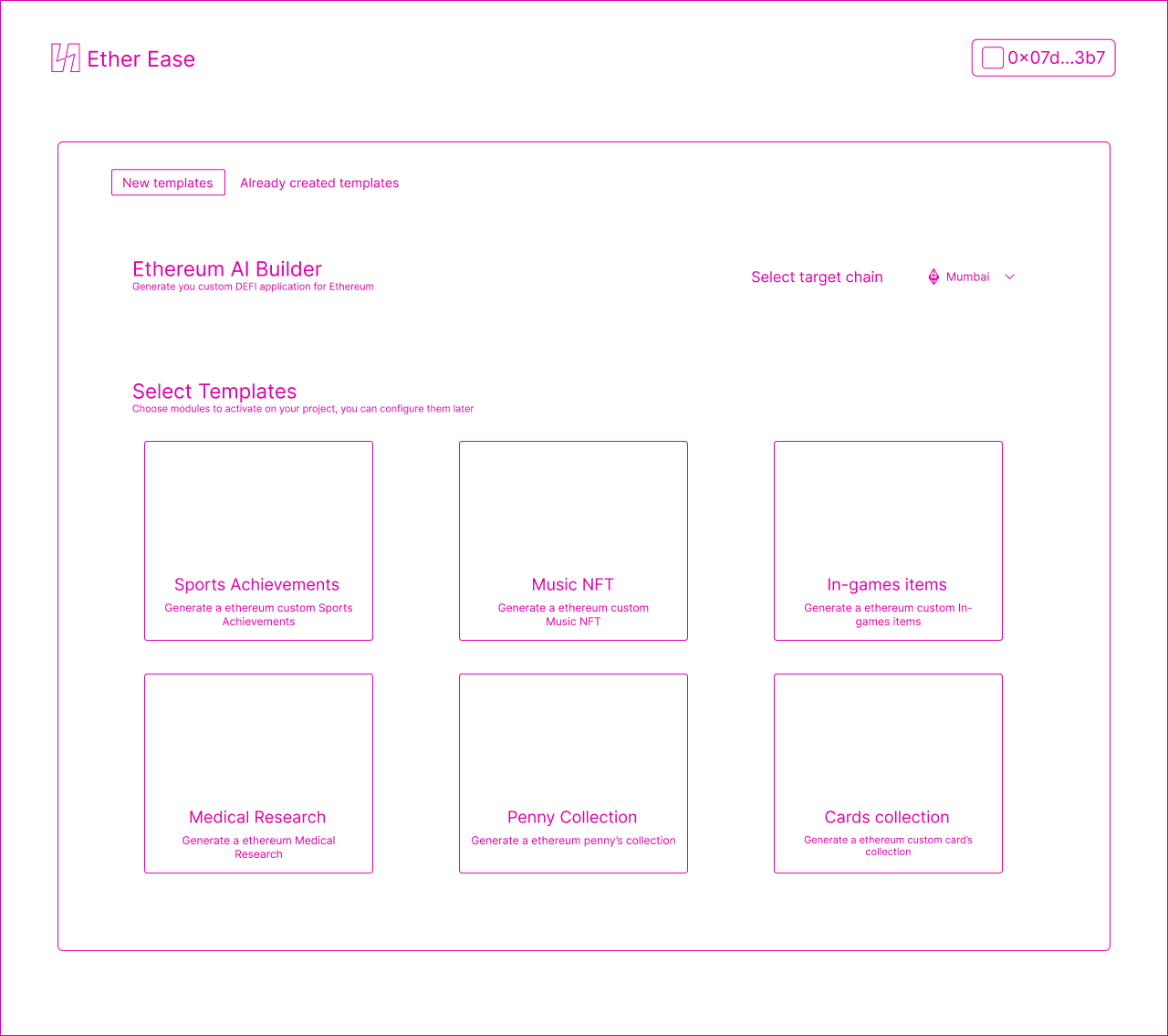
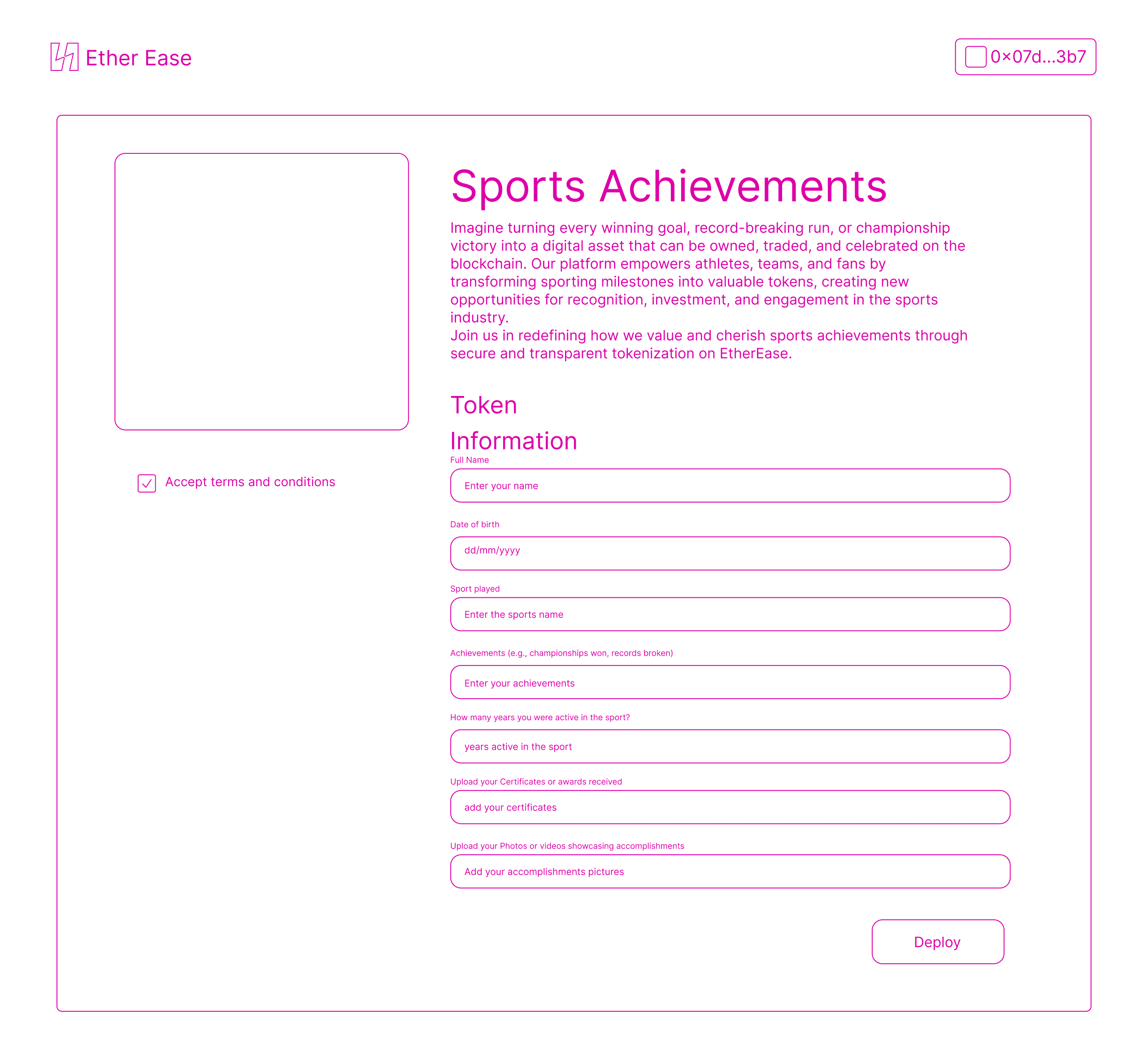
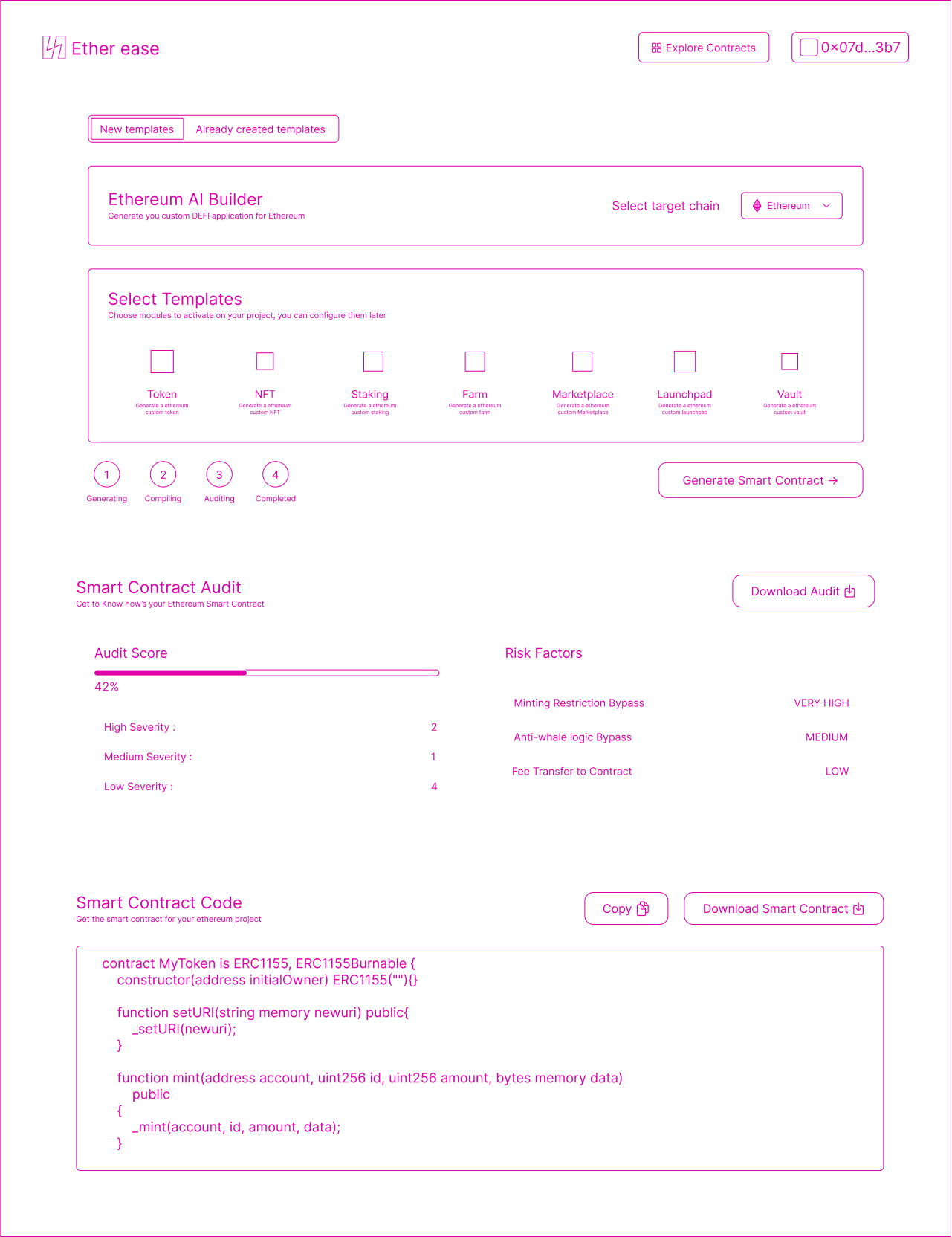
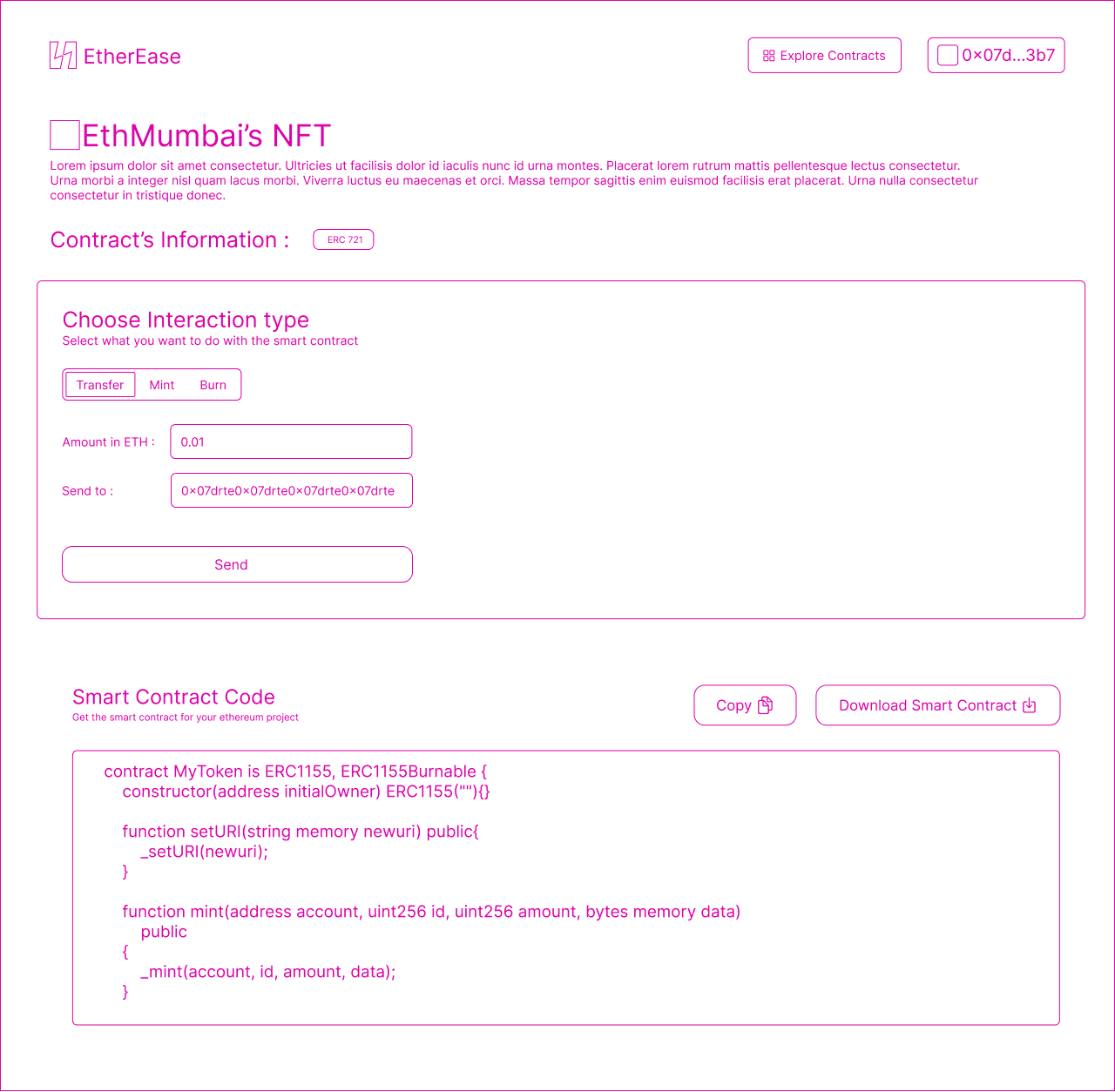
Ideation & Initial Designs

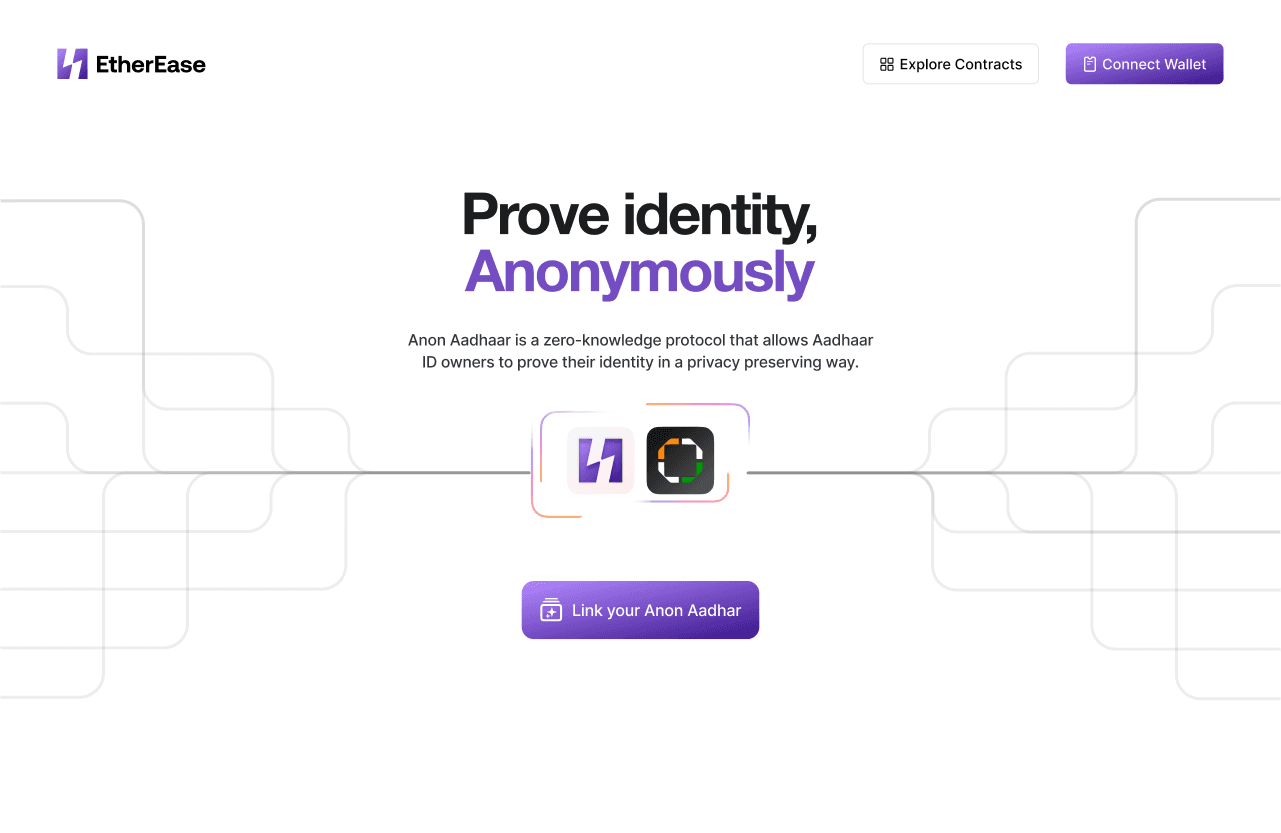
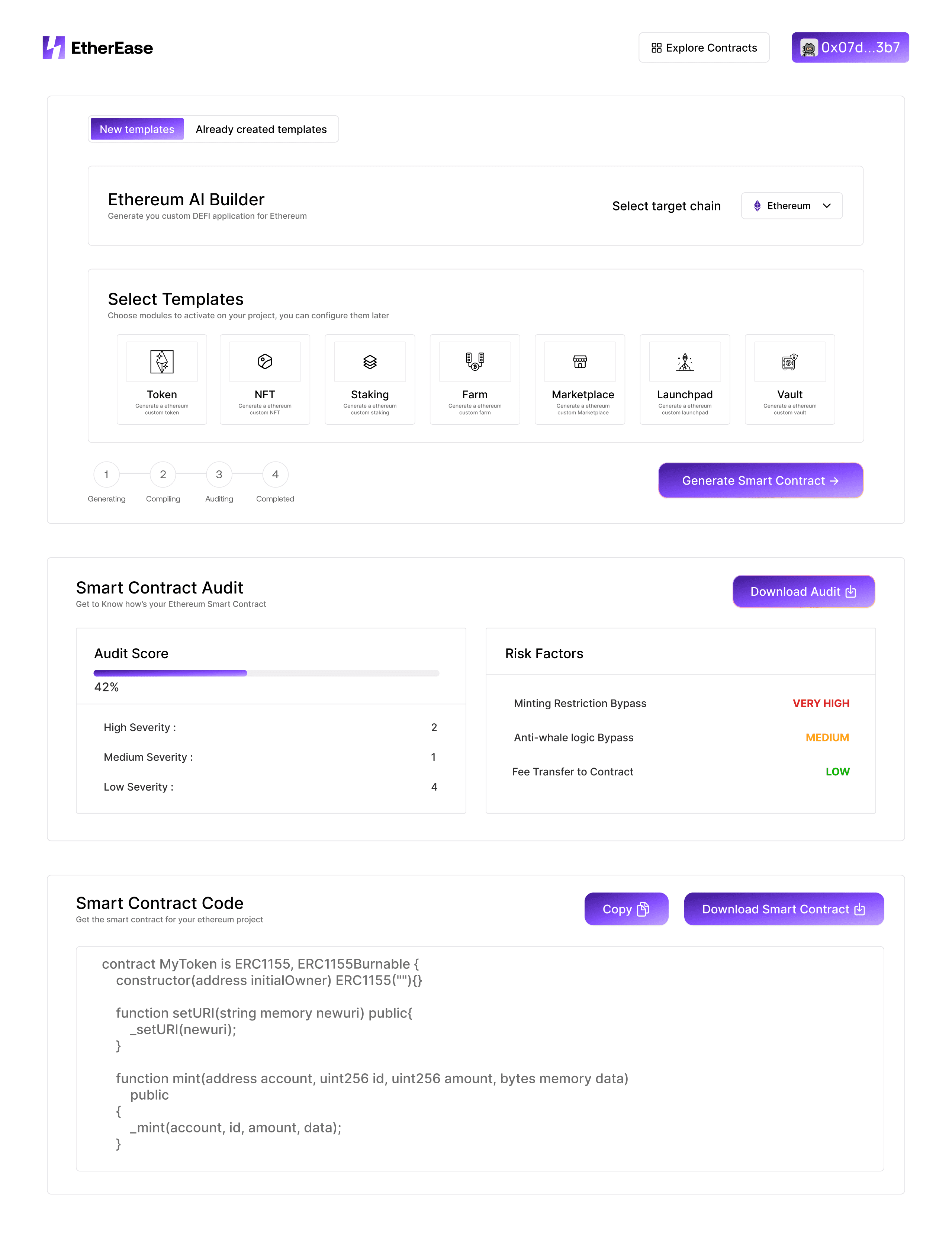
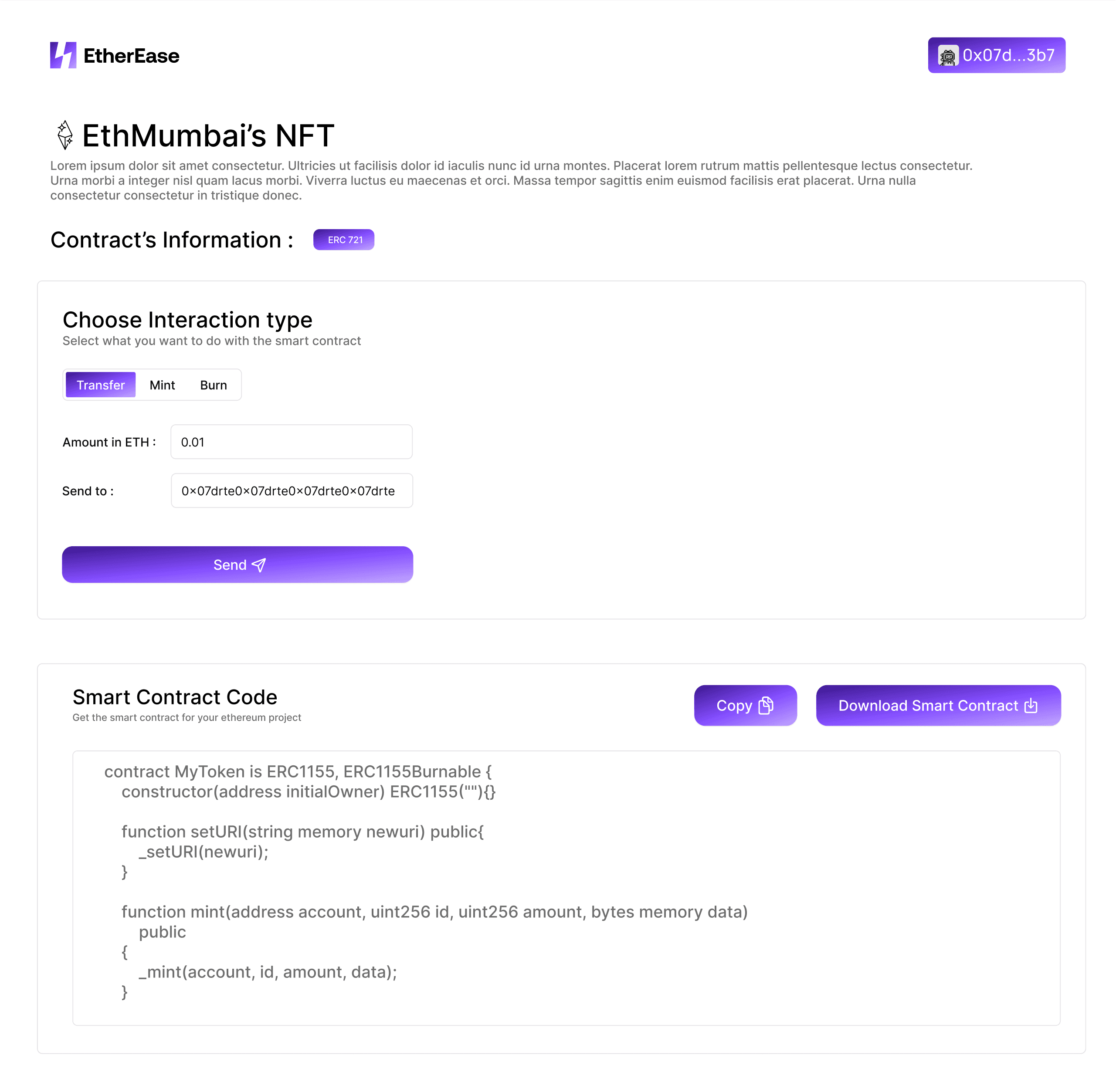
In the end, Our Team featured on ETH India’s Twitter Account🥳
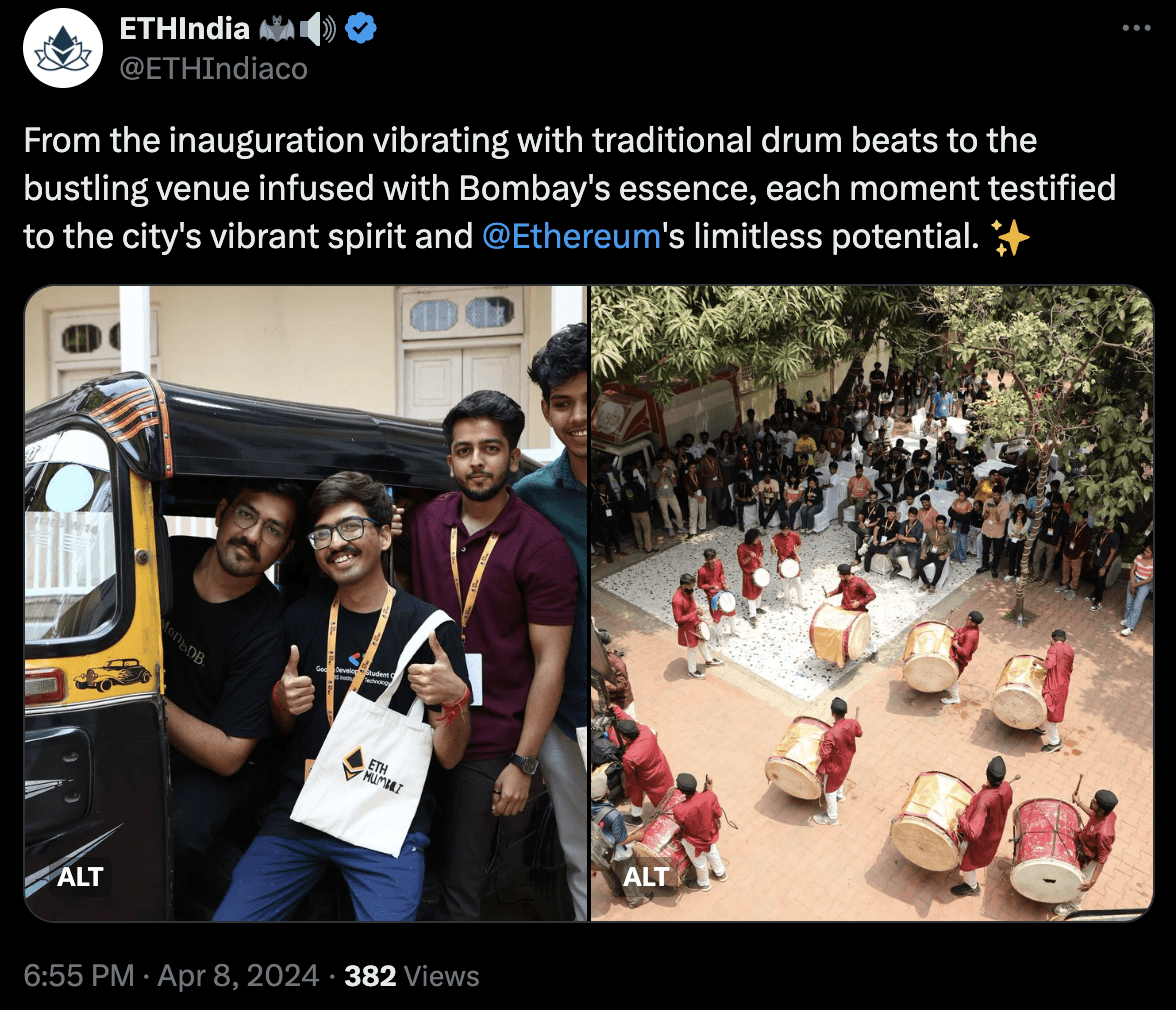
Click here to view the tweet
✨Special Thanks to my all Team Members
Designed and developed by Team CallBack_Hell✨
" Prakhar Sharma " & " Keshav Malik "
Conclusion:
Developing EtherEase at EthMumbai was a transformative experience, showcasing our ability to solve complex problems and create user-centric solutions. This project has not only broadened our understanding of Web3 technologies but also highlighted the importance of making these technologies accessible to everyone. Moving forward, we aim to continue refining EtherEase and expanding its capabilities to further democratize Web3 adoption.
Explore the final designs
I’ve detailed the final UI designs of Etherease in my Figma files.
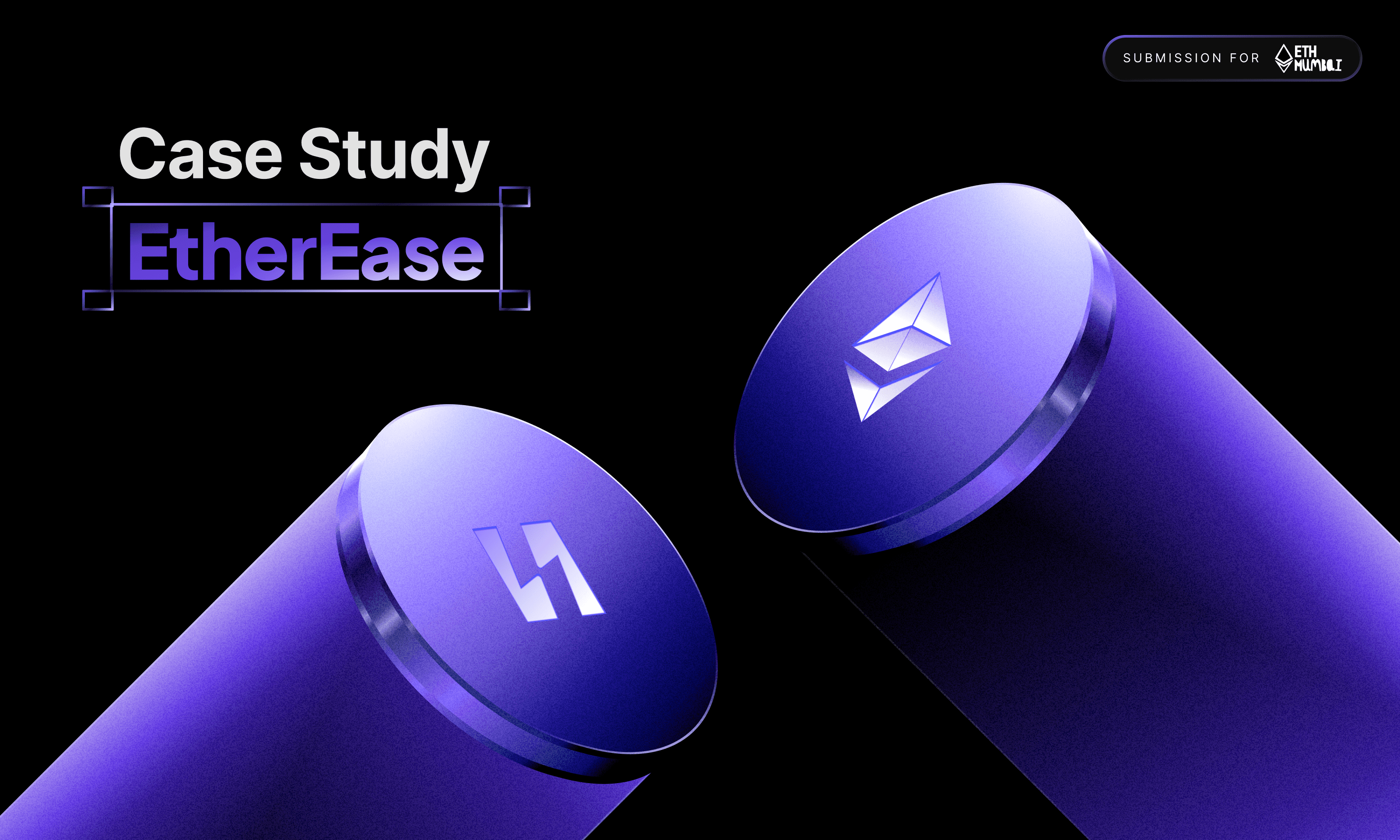
Project Overview:
Etherease is a no-code platform that streamlines Web3 adoption by enabling users to effortlessly tokenize assets and create smart contracts.
Date:
Mar 31, 2024
Organization
EthMumbai
Category
Web3, Tokens, NFTs, Account Abstraction, EtherJS, Blockchain
